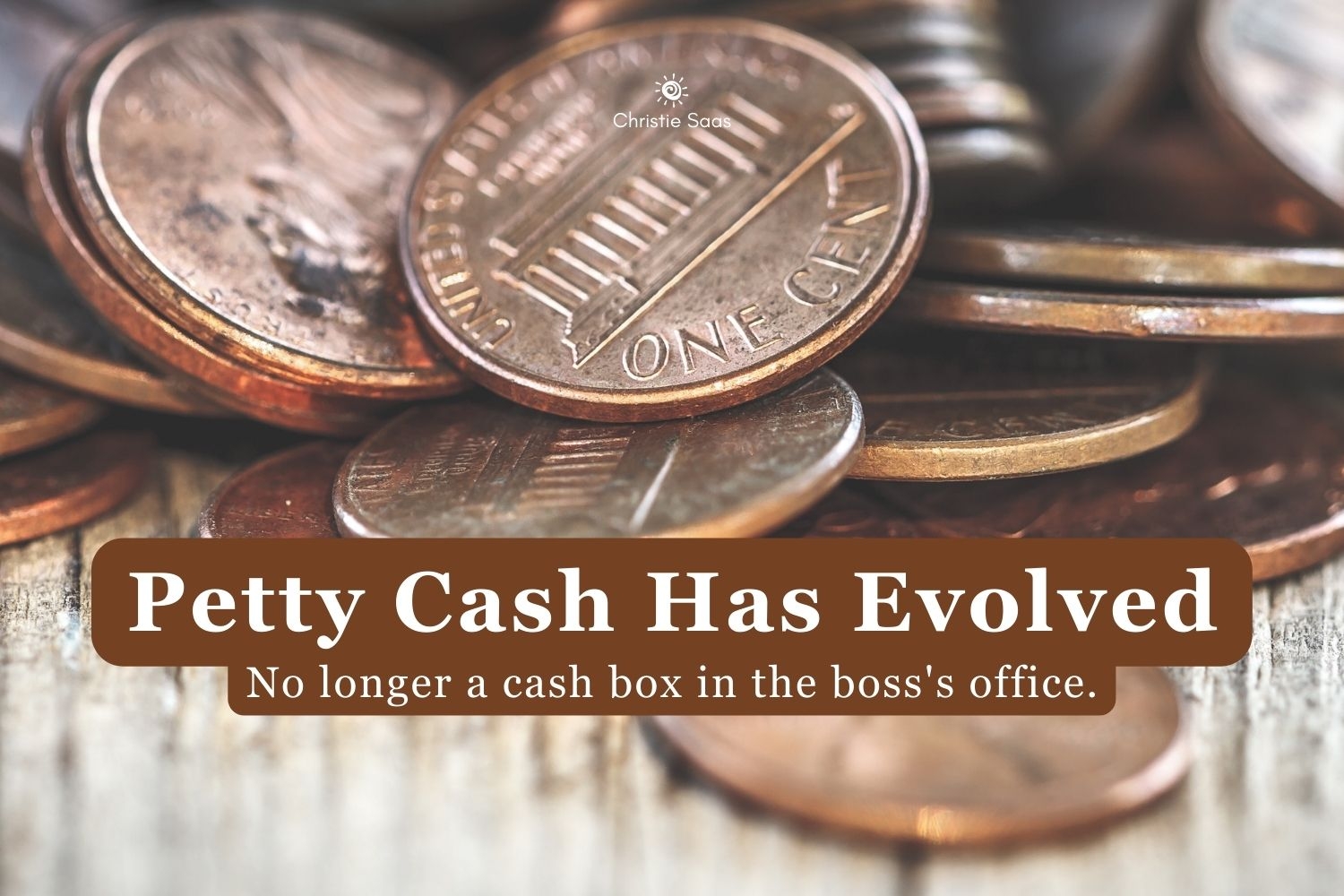Still using the traditional petty cash box in the boss’s office? How’s that working?

Petty cash is a small pool of money used for incidental expenses. Petty cash is different from a non-profit’s normal bill paying system because it is for much smaller amounts and for items that need to be purchased more occasionally. An example might include buying a couple of stamps at the post office or incidental office supplies that were forgotten from a larger office supply order.
Petty cash has evolved.
But petty cash has evolved and can sometimes be used to provide more purchasing autonomy for employees. If your non-profit has several remote offices instead of the more traditional central office, employees may need a way to pay for their own office supplies, program materials, or travel incidentals.
Gone are the days of expecting employees to incur work-related expenses on their own personal credit cards, and then wait several days or weeks to be reimbursed. Many non-profits embrace debit and/or credit cards for their employee petty cash systems. No reimbursement necessary.
Decide how much is needed.
Before setting up a petty cash for your non-profit, it's a good idea to do a little bit of research. Consider who will need access to the petty cash fund. Will each employee have their own? And finally, how much will each petty cash account need?
A traditional petty cash is usually very low, around $100. This is ideal if an employee rarely makes purchases of any significant amount. For employees who travel a lot, or work in remote offices, petty cash might be a larger amount such as $1000 for a debit card, or even a credit card with a several thousand-dollar limit.
Write the policy for reconciling accounts.
Petty cash is reconciled monthly whether a traditional cash box system, or debit/credit card system. Receipts should show detailed information for what was purchased. No other items should be purchased along with the item purchased through petty cash. If using a debit/credit card petty cash system, the receipt should include both the debit machine receipt and the till receipt showing the tax breakdown. Why? Depending on where your non-profit is located, you can likely apply for a refund of some of the tax you've paid. Check with your auditor.
At the end of the month all the receipts are gathered and itemized in a master list showing the date the purchase was made, the name of the vendor, the reason for the purchase, and the amount of the purchase. The total spent when all the receipts are added up, needs to match the money that has gone out of the petty cash account. If it doesn't, then someone isn't following the policy.
Determine who replenishes the petty cash account.
How your non-profit replenishes each petty cash fund will depend on your accounting skill and your petty cash policy. A very traditional petty cash would be reconciled by issuing a cheque to the designated employee for the total amount spent for the month. That employee would cash the cheque and put the bills and coin back into the petty cash box.
A debit/credit card system would be reconciled by transferring funds from the central operating bank account to the small individual employee debit/credit card accounts. Either way the receipts would be kept in a monthly petty cash package from each employee, for the auditor to review at year end.
Pick the system that’s the right fit.
Petty cash isn’t a required system for a non-profit. Having a petty cash account certainly does put the organization at risk of errors, missing receipts, unplanned purchases, and a host of other mistakes, including fraud. Petty cash can be a nightmare when unregulated or mismanaged.
With a clear policy, and a procedure to catch and correct errors quickly, a petty cash system can be very convenient. A debit/credit card system can mirror the way an employee makes their own personal purchases and can be much easier to understand than the traditional cash box system.
How to get started.
If your non-profit would like to change its petty cash system from the dated cash box in the boss’s office to a more current debit/credit card system, it needs to start with policy. Financial transactions need to have all the rules in place, and the necessary board approvals, long before being put into use. The transition can be as simple as changing the working in a traditional petty cash policy to the new debit/credit card system. Once the policy is in place, and the approvals collected, it is much easier to set-up individual employee accounts with the right amount – because all the planning was done in advance.
What kind of petty cash system does your non-profit use? I’d love to learn the details and if it is working for your staff team. Please use the form on the right side of the page to let me know.
-Christie
…
Hi, I'm Christie Saas, former board member, current Executive Director, and non-profit volunteer. I remember well, those early years when I lacked the training, the confidence, and the work-life balance to focus on becoming the best non-profit leader I could be.
Fast-forward past many bumps in the road, lessons learned, and you’ll find me still in the trenches, but a little wiser, a little calmer, and a whole lot happier. I love my work and I want to help you love yours too.
I created ChristieSaas.com so non-profit leaders never need to feel alone. I’m here to help. If you’re a brand-new non-profit leader, or a little more seasoned, someone who’s looking to make a meaningful contribution and still have time for a full life away from the job, you’re in the right place.
© Christie Saas 2023 All Rights Reserved
…
Want to learn more?
Start with one of my free resources.


